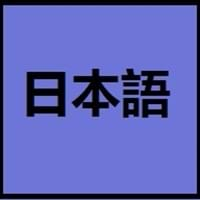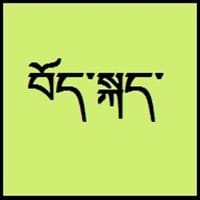Countries
Japan
China, Nepal
National Language
Japan
Nepal, Tibet
Second Language
Not spoken in any of the countries
Not spoken in any of the countries
Speaking Continents
Asia, Pacific
Asia
Minority Language
Palau
China, India, Nepal
Regulated By
Agency for Cultural Affairs (文化庁) at the Ministry of Education
Committee for the Standardisation of the Tibetan Language
Interesting Facts
- In Japanese Language, there are 4 different ways to address people: kun, chan, san and sama.
- There are many words in Japanese language which end with vowel letter, which determines the structure and rhythm of Japanese.
- Tibetan dialects vary alot, so it's difficult for tibetans to understand each other if they are not from same area.
- Tibetan is tonal with six tones in all: short low, long low, high falling, low falling, short high, long high.
Similar To
Korean Language
Not Available
Derived From
Not Available
Not Available
Alphabets in
Japanese-Alphabets.jpg#200
Tibetan-Alphabets.jpg#200
Scripts
Kana
Tibetan alphabet, Tibetan Braille
Writing Direction
Left-To-Right, Horizontal, Top-To-Bottom
Left-To-Right, Horizontal
Hello
こんにちは (Kon'nichiwa)
བཀྲ་ཤིས་བདེ་ལེགས། (tashi delek)
Thank You
ありがとう (Arigatō)
ཐུགས་རྗེ་ཆེ་། (tujay-chay)
How Are You?
お元気ですか (O genki desu ka?)
ཁྱེད་རང་སྐུ་གཇུགས་བདེ་པོ་ཡིན་པས།
(kayrang kusu debo yimbay?)
Good Night
おやすみなさい (Oyasuminasai)
གཟིམ་ལཇག་གནང་དགོས་། (sim-jah nahng-go)
Good Evening
こんばんは (Konbanwa)
དགོང་དྲོ་བདེ་ལེགས།
Good Afternoon
こんにちは (Konnichiwa!)
ཉིན་གུང་བདེ་ལེགས།
Good Morning
おはよう (Ohayō)
སྔ་དྲོ་བདེ་ལེགས། (nga-to delek)
Please
お願いします (Onegaishimasu)
thu-je zig / ku-chee.
Sorry
ごめんなさい (Gomen'nasai)
ཀོང་དགས་། (gawn-da)
Bye
さようなら (Sayōnara)
ག་ལེར་ཕེབས་། (kha-leh phe)
I Love You
愛しています (Aishiteimasu)
ང་ཁྱེད་རང་ལ་དགའ་པོ་ཡོད་ (nga kayrâng-la gawpo yö)
Excuse Me
すみません (Sumimasen)
དགོངས་དག བཟོད་དུ་གསོལ། ཐུགས་རྗེ་གཟིགས།
Dialect 1
Sanuki
Central Tibetan
Where They Speak
Kagawa
China, India, Nepal
Dialect 2
Hakata
Khams Tibetan
Where They Speak
Fukuoka
Bhutan, China
How Many People Speak
Not Available
Dialect 3
Kansai
Amdo Tibetan
Where They Speak
kansai
China
How Many People Speak
Not Available
Speaking Population
Not Available
Native Name
日本語
བོད་སྐད་ (pö-gay)
Alternative Names
Not Available
Bhotia, Dbus, Dbusgtsang, Phoke, Tibetan, U, Wei, Weizang, Zang
French Name
japonais
tibétain
German Name
Japanisch
Tibetisch
Pronunciation
/nihoɴɡo/: [nihõŋɡo], [nihõŋŋo]
Not Available
Ethnicity
Japanese (Yamato)
tibetan people
Language Family
Japonic Family
Sino-Tibetan Family
Subgroup
Not Available
Tibeto-Burman
Branch
Not Available
Not Available
Early Forms
Old Japanese, Early Middle Japanese, Late Middle Japanese and Early Modern Japanese
Old Tibetan, Classical Tibetan
Standard Forms
Japanese
Standard Tibetan
Language Position
Not Available
Signed Forms
Signed Japanese
Tibetan Sign Language
Scope
Individual
Not Available
ISO 639 6
Not Available
Not Available
Glottocode
nucl1643
tibe1272
Linguasphere
45-CAA-a
No data Available
Language Type
Living
Not Available
Language Linguistic Typology
Subject-Object-Verb
Not Available
Language Morphological Typology
Agglutinative, Synthetic
Not Available
All Japanese and Tibetan Dialects
Most languages have dialects where each dialect differ from other dialect with respect to grammar and vocabulary. Here you will get to know all Japanese and Tibetan dialects. Various dialects of Japanese and Tibetan language differ in their pronunciations and words. Dialects of Japanese are spoken in different Japanese Speaking Countries whereas Tibetan Dialects are spoken in different Tibetan speaking countries. Also the number of people speaking Japanese vs Tibetan Dialects varies from few thousands to many millions. Some of the Japanese dialects include: Sanuki, Hakata. Tibetan dialects include: Central Tibetan , Khams Tibetan. Also learn about dialects in South American Languages and North American Languages.
Japanese and Tibetan Speaking population
Japanese and Tibetan speaking population is one of the factors based on which Japanese and Tibetan languages can be compared. The total count of Japanese and Tibetan Speaking population in percentage is also given. The percentage of people speaking Japanese language is 1.90 % whereas the percentage of people speaking Tibetan language is Not Available. When we compare the speaking population of any two languages we get to know which of two languages is more popular. Find more details about how many people speak Japanese and Tibetan on Japanese vs Tibetan where you will get native speakers, speaking population in percentage and native names.
Japanese and Tibetan Language Codes
Japanese and Tibetan language codes are used in those applications where using language names are tedious. Japanese and Tibetan Language Codes include all the international language codes, glottocodes and linguasphere.





